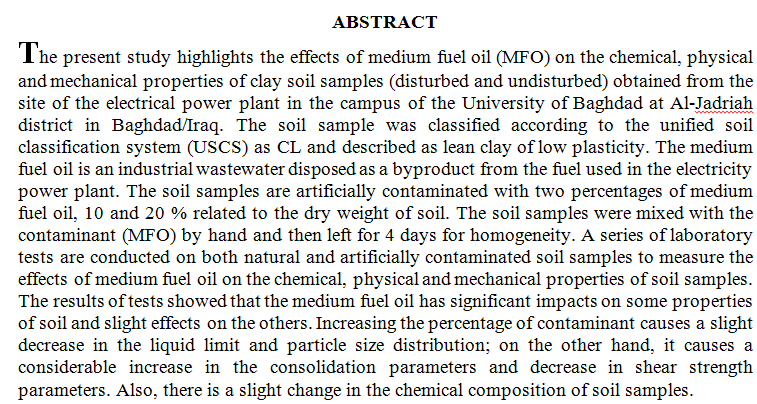
Zinc oxide (ZnO) nanoparticles were synthesized using a modified hydrothermal approach at different reaction temperatures and growth times. Moreover, a thorough morphological, structural and optical investigation was demonstrated using scanning electron microscopy (SEM), x-ray diffraction (XRD), ultra-violate visible light spectroscopy (UV-Vis.), and photoluminescence (PL) techniques. Notably, SEM analysis revealed the occurrence of nanorods-shaped surface morphology with a wide range of length and diameter. Meanwhile, a hexagonal crystal structure of the ZnO nanoparticles was perceived using XRD analysis and crystallite size ranging from 14.7 to 23.8 nm at 7 and 8 ℎ𝑟𝑠., respectively. The prepared ZnO samples showed good abso
... Show MoreThe use of blended cement in concrete provides economic, energy savings, and ecological benefits, and also provides. Improvement in the properties of materials incorporating blended cements. The major aim of this investigation is to develop blended cement technology using grinded local rocks . The research includes information on constituent materials, manufacturing processes and performance characteristics of blended cements made with replacement (10 and 20) % of grinded local rocks (limestone, quartzite and porcelinite) from cement. The main conclusion of this study was that all types of manufactured blended cement conformed to the specification according to ASTM C595-12 (chemical and physical requirements). The percentage of the compress
... Show MoreZnO nanostructures were synthesized by hydrothermal method at different temperatures and growth times. The effect of increasing the temperature on structural and optical properties of ZnO were analyzed and discussed. The prepared ZnO nanostructures were characterized by X-ray diffraction (XRD), UV–Vis. absorption spectroscopy (UV–Vis.), Photoluminescence (PL), and scanning electron microscopy (SEM). In this work, hexagonal crystal structure prepared ZnO nanostructures was observed using X-ray diffraction (XRD) and the average crystallite size equal 14.7 and 23.8 nm for samples synthesized at growth time 7 and 8 hours respectively. A nanotubes-shaped surface morphology was found using scanning electron microscopy (SEM). The optic
... Show More (3)
(3)

In this work, yttrium oxide particles (powder) reinforced AL-Si matrix composites (Y2O3/Al-Si) and Chromium oxide particles reinforced AL-Si matrix composites (Cr2O3/AL-Si) were prepared by direct squeeze casting. The volume percentages of yttrium oxide used are (4, 8.1, 12.1, 16.1 vol %) and the volume percentages of the chromium oxide particles used are (3.1, 6.3, 9.4, 12.5 vol. %). The parameters affecting the preparation of Y2O3/Al-Si and Cr2O3/AL-Si composites by direct squeeze casting process were studied. The molten Al-Si alloy with yttrium oxide particles or with chromium oxide particles was stirred again using an electrical stirrer at speed 500 rpm and the molten alloy was poured into the squeeze die cavity. Th
... Show More (7)
(7)
 (6)
(6)
The use of blended cement in concrete provides economic, energy savings, and ecological benefits, and also provides. Improvement in the properties of materials incorporating blended cements. The major aim of this investigation is to develop blended cement technology using grinded local rocks . The research includes information on constituent materials, manufacturing processes and performance characteristics of blended cements made with replacement (10 and 20) % of grinded local rocks (limestone, quartzite and porcelinite) from cement.
The main conclusion of this study was that all ty
... Show More (37)
(37)
 (34)
(34)
The use of blended cement in concrete provides economic, energy savings, and ecological benefits, and also provides. Improvement in the properties of materials incorporating blended cements. The major aim of this investigation is to develop blended cement technology using grinded local rocks . The research includes information on constituent materials, manufacturing processes and performance characteristics of blended cements made with replacement (10 and 20) % of grinded local rocks (limestone, quartzite and porcelinite) from cement. The main conclusion of this study was that all types of manufactured blended cement conformed to the specification according to ASTM C595-12 (chemical and physical requirements). The percentage of the compress
... Show More